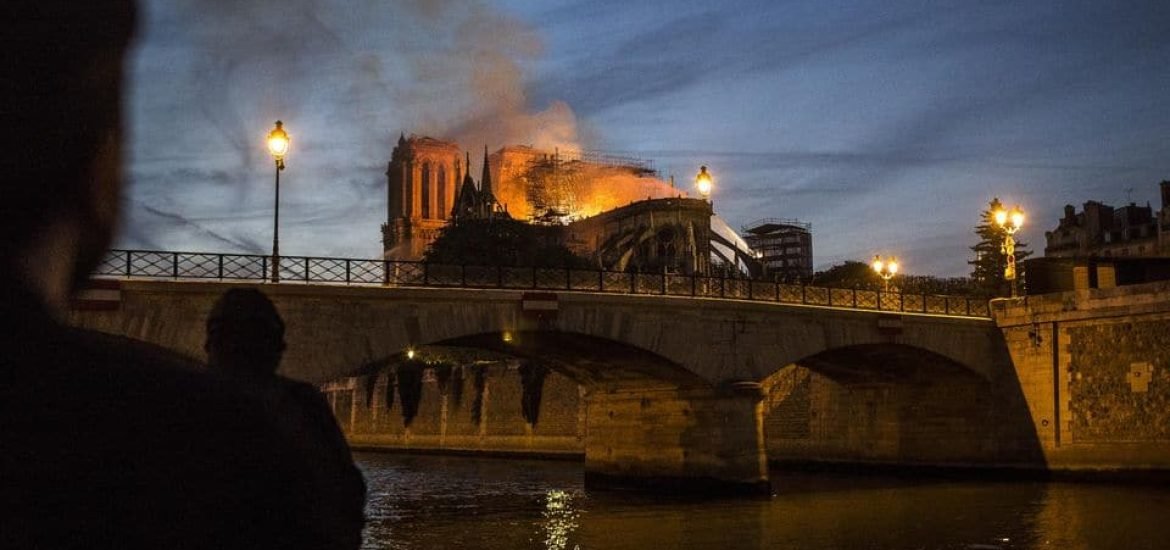
Following the dramatic fire at Notre Dame De Paris, European Scientist had the opportunity to interview Suzana Demetrescu-Guenego, an independent architect specialising in heritage restoration. She considers this tragic event and the possible ways to rebuild the monument.
Interview with Suzana Demetrescu-Guenego, Heritage Architect
The European Scientist: Your professional activity has concentrated on heritage restoration, especially of ancient churches, for some years now
Suzana Demetrescu-Guenego: Yes, since 2003, when I launched my architectural practice, I have chalked up a number of projects on churches in the Ile de France region, which includes both planning and management of works. I have worked on projects such as the restoration of the Château de Ferrières-en-Brie, for example, or the Saint-Saturnin church in Chauconin-Neufmontiers, the Saint-Martin church at Mesnil-Amelot, the Saint-Lambert church in Varennes-sur-Seine, etc. In my career I have once encountered a similar scenario to what happened in Notre Dame: it was the gate house of Fleury en Brie, where the attic space had been destroyed by fire and had to be rebuilt exactly as before.
TES: Even with your long experience in the field, you can’t quite explain what really happened at Notre Dame
SDG: Yes indeed, this tragedy, apart from being catastrophic, does feel totally surreal to me both from what happened and how it could have occurred. It is truly unimaginable. We have just lost entire sections of France’s history and it will leave scars in our memory. It is all the more surprising because this building, since the restoration by Violet Le Duc in the second half of the 19th century, has always been pampered. I can’t envisage it until I’ve been there to see what might have happened. I am however very experienced in working with old buildings and I have several examples in mind. I’m thinking in particular of the roofs of two churches that collapsed suddenly due to humidity. It is also interesting to note that these buildings collapse in on themselves without causing damage to the surrounding area, which shows the care taken by the builders of that time to foresee possible accidents. So, as TV viewers around the world looked on, the Notre Dame spire collapsed into the inside of the structure. The fact remains though that all these comments do not explain what may have happened.
TES: The whole world has now discovered the craftsmanship of the framework, previously invisible to the public
SDG: All the architecture students who pass through the famous Ecole de Chaillot study this absolute masterpiece, the timber framework built in the “chevron-formant-fermes” style of chevron trusses. This was a very notable feature of Notre Dame and what made it an exceptional building. This part is usually hidden from the public, an expression of the modesty of the Compagnons, the guildsmen, who constructed it. All connoisseurs and art-lovers knew that the Notre Dame timber framework was in particularly good condition. Under normal circumstances this area was under constant supervision and particularly cherished.
TES: What would you expect from the reconstruction? President Macron talked about five years, does that sound realistic to you?
SDG: There are usually two schools of thought in opposition and that’s always the same for all heritage buildings. The first idea wants a reconstruction which will replicate the original identically. In that case, we could make a wooden frame or a metal frame as has already been done for other churches. What is certain is that it will take at least ten years to restore the church, but above all to reopen it and make it a living building as quickly as possible, after all security measures have been taken over the next five years. I would like to point out that the cathedral was extensively restored in the nineteenth century, including the Gallery of Kings and the spire. The second idea consists of a modern restoration. This solution would be a kind of sin of pride for our generation. It would also take two or three generations to assess the relevance of this proposal if it was ever adopted. It really is only from a historical viewpoint that we would be able to judge the ability of our contemporary architects to reach for the universal. What is certain is that not everything is possible in this area, because the main lines are already formed and the walls that remain represent perfect safeguards. It seems to me that the first idea would be the simplest, especially since the materials and techniques have not developed.
TES: What role does science play in this future project?
SDG: In this kind of situation, modelling using BIM tools will probably be used to represent the archives and plans of this Cathedral, which has been documented by every means. But for the rest, traditional trades will continue to be employed. Of course, the craftsmen who will take over the construction site can be assisted by modern robots and cutting tools, but the Compagnons du devoir and other master craftsmen insist on the need to work by hand as much as possible. We can count on them to bring all the necessary passion to the work of this forthcoming monumental construction site. The result will be a building that radiates the power of the heart and soul that they put into it.
This post is also available in: FR (FR)DE (DE)